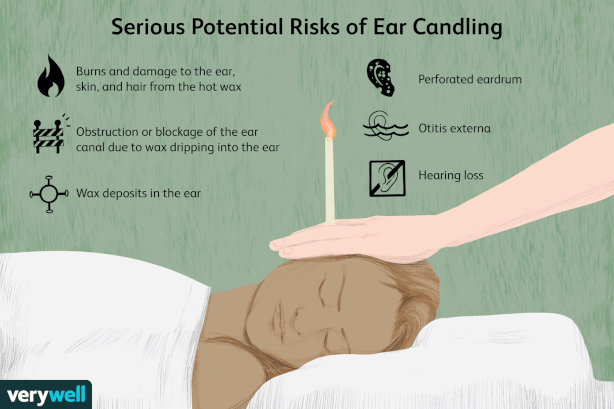
Does ear candling work?
For years, ear candling was considered a viable treatment for impacted ear wax, dating back to the ancient Egyptians, and recently, it has returned out of the haze of hashtags and health fads to become a popular remedy to timeless issues like vertigo, tinnitus, and ear infections. But does it really work? Our ancestors must’ve had some idea of how to take care of themselves. And these influencers! Surely, they know what they’re talking about. The sad fact of the matter is that while ear candling may have been a reasonable treatment in the past, it is no longer a healthy or safe alternative, but in order to understand why, one must understand the role that ear wax plays in protecting our ears and how it gets impacted in the first place.
Ear wax (or cerumen) is a nuisance. It’s sticky, it’s shiny, and it’s one of the most common causes of hearing loss, but despite its many annoying features, ear wax is vital to the protection of our ears. For example, the oily substance traps dust and bacteria from damaging the ear canal and protects delicate skin from irritation caused by water. That being said, some people have overactive glands that produce more wax than others, making it more difficult to remove; however, those with typical cerumen production could also be at risk because over time, the usage of household items like cotton swabs or bobby pins tend to push ear wax into the canal rather than out of it.
Ear candlers will argue that their method is the definitive way to avoid the risk of further impacting your ear canal, and while candling may not damage your ear in the ways that bobby pins do, they can cause serious damage to your ears. The process of candling involves placing a lighted, conic candle in your ear and allowing it to sit for about 15 minutes. Some proponents say that the heat creates a suction force that pulls debris out. Others suggest that the heat softens the wax, making it easier for it to just drip out on its own.
In August of 2020, the U.S. Food and Drug Administration (FDA) made an official statement determining that “there is no validated scientific evidence to support the efficacy of the product for its intended use,” and that the product is dangerous even if used properly because “the use of a lit candle in the proximity of a person’s face [carries] a high risk of causing potentially severe skin/hair burns and ear damage.” Other dangers include, perforated eardrums, hearing loss, ear infections, and blockage due to wax. The consensus among the scientific and medical communities is that ear candling does not work, so if all the traditional home remedies are counterproductive, what’s the best way to clean out impacted ear wax?
The best option is to visit your local doctor. They have both the knowledge and the tools to examine your ears and determine a safe and effective solution to the cause of your symptoms. On the other hand, if ear wax is more of a nuisance than no medical intervention is necessary. Our bodies are designed to evacuate old ear wax on its own; however, if you must clean your ears, keep it simple and just use a washcloth. Small amounts of baby oil or hydrogen peroxide can be effective in softening wax as well, but whatever you do, stay away from the candles.
